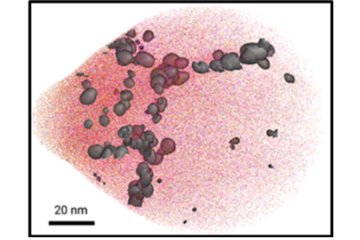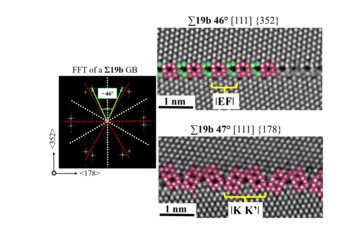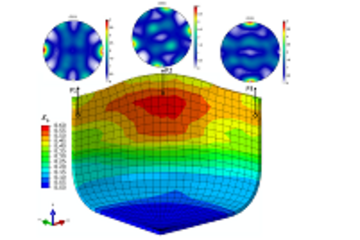All genres
21.
Talk
Nanostructured steels: Hierarchical materials engineered down to the atomic scale. ESOMAT 2015, Antwerp, Belgium (2015)
22.
Talk
Intrinisically nanostructured steels. Materials Week 2015, Dresden, Germany (2015)
23.
Talk
Segregation Engineering: Confined Phase States at Lattice Defects. Workshop "Recent Progress in Plasticity and Phase Transformations", Bochum, Germany (2015)
24.
Talk
Ductile damage: Micro-mechanisms, macro-influences. The 4th International Symposium on Steel Science - ISSS 2014, Kyoto, Japan (2014)
25.
Talk
Multi-scale characterization of ductile martensitic steels. Advanced Steels 2014, Madrid, Spain (2014)
26.
Talk
In-situ characterization of martensite plasticity by high resolution microstructure and microstrain mapping. ICOMAT 2014, International Conference on Martensitic Transformations 2014, Bilbao, Spain (2014)
27.
Talk
Deformation micro-mechanisms in medium-Mn TRIP-maraging steel. 2nd International Conference on High Manganese Steel, HMnS 2014, Aachen, Germany (2014)
28.
Talk
Deformation micro-mechanisms in novel TRIP-assisted martensitic-matrix steel. International Conference on Martensitic Transformations 2014, ICOMAT 2014, Bilbao, Spain (2014)
29.
Talk
Size effects on mechanical stability of metastable austenite. Thermec 2013, Las Vegas, NV, USA (2013)
30.
Talk
Size effects on mechanical stability of metastable austenite. SFB Klausurtagung, Hagen, Germany (2013)
31.
Talk
Mechanical stability of nano-sized reverted austenite in a reversion treated martensitic steel. Euromat 2013, Sevilla, Spain (2013)
32.
Talk
Size effects on austenite stability investigated by in-situ EBSD. BSSM 9th Int. Conf. on Advances in Experimental Mechanics, Cardiff, UK (2013)
33.
Talk
Spatially Correlated TEM, EBSD and APT Analysis. SFB 761 Doktorandenseminar, RWTH Aachen, Aachen, Germany (2012)
34.
Talk
Spatially Correlated TEM, EBSD and APT Analysis. SFB 761 Klausurtagung, Bad Neuenahr, Germany (2012)
35.
Poster
Cyclic γ reversion enabled microstructure and mechanical property restoration in TRIP-maraging steels. MSE 2014, Darmstadt, Germany (2014)
36.
Poster
Size effects on mechanical stability of metastable austenite. GDRi CNRS MECANO General Meeting on the Mechanics of Nano-Objects, MPIE, Düsseldorf, Germany (2013)
37.
Thesis - PhD
Nanolaminate TRIP-TWIP martensite matrix steels: Design and Characterization. Dissertation, RWTH Aachen, Aachen, Germany (2015)











